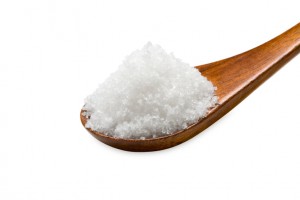The Centers for Disease Control and Prevention (CDC) has released a new Vital Signs monthly report that focuses on sodium in children’s diets. The report states that a bout 9 in 10 U.S. children eat more sodium than recommended. Most is consumed as salt in processed foods. Children ages 6 to 18 years in this country eat an average of 3,300 mg of sodium every day before salt is added at the table. The recommended amount is less than 2,300 mg a day.
 A high sodium diet can lead to high blood pressure; in fact, about 1 in 6 children in this country has high blood pressure. Lowering sodium in your child’s diet today can help prevent heart disease in the future.
A high sodium diet can lead to high blood pressure; in fact, about 1 in 6 children in this country has high blood pressure. Lowering sodium in your child’s diet today can help prevent heart disease in the future.
The taste for salt is established at a young age. Children eat about 15% of the daily sodium amount at breakfast, 30% at lunch, 39% at dinner, and 16% at snacks. The most common high sodium foods include pizza, bread and rolls, cold cuts and cured meats, sandwiches such as cheeseburgers, snacks such as chips, chicken patties and nuggets, pasta mixed dishes, Mexican mixed dishes, and soup. About 43% of the sodium consumed by children comes from those 10 common food types.
Most sodium is added to food before you buy it or order it in a restaurant. About 65% of the sodium in the foods kids eat comes from store foods, 13% from fast food restaurants, and 9% from school cafeteria foods.
You can help lower the sodium intake of your child by modeling behavior and influencing the way foods are produced, sold, prepared, and served. Eat a diet rich in unprocessed fruits and vegetables. Compare Nutrition Facts labels to choose the lowest sodium option before you buy. Request nutrition information in restaurants, and ask the manager of your local grocery store to provide more low sodium options of the foods you buy. And when cooking at home, use different herbs and spices instead of adding salt.
The federal government is applying new nutrition standards for foods sold and served in schools that will reduce the sodium content up to 50% by 2022. Schools should provide training for school nutrition services staff to reduce sodium, and replace high sodium foods with lower sodium options.




